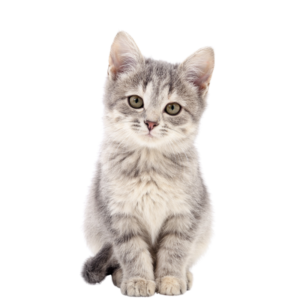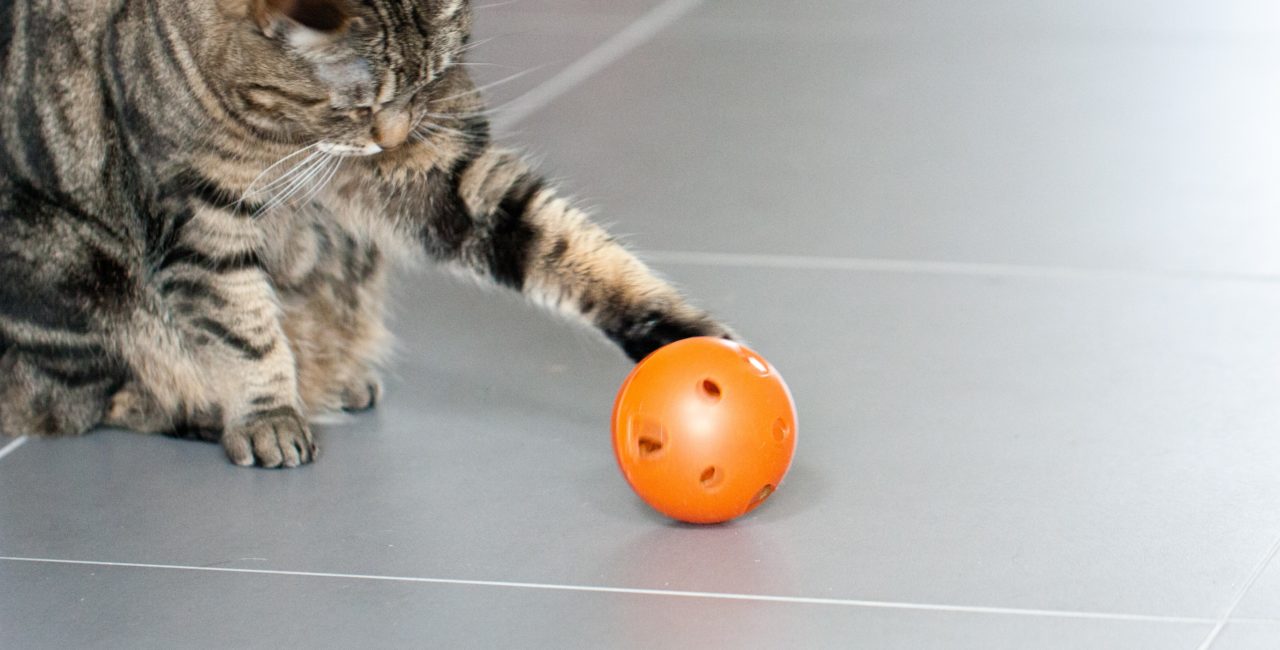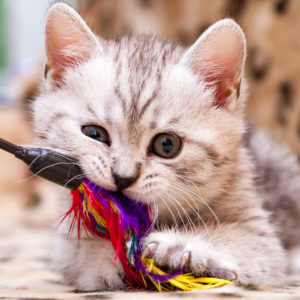If you’ve been following the Killarney Cat Hospital Facebook page you’ve likely heard us extolling the virtues of feeding puzzles for cats. I recently went to the American Association of Feline Practitioners Annual Veterinary Conference and learned even more about them and WHY they are so important.
Did you know that in the wild a cat will eat about 7 to 10 juicy mice per day? Each hunt takes them between 10 and 30 minutes and only 1 in 3 hunts results in a mouse (or other prey). If you think of that you start to realize that cats in the wild actually spend a LOT of time thinking about food and trying to get food and moving around to find their food.
Now think about how we feed our cats in the house. Majority of clients are putting out a bowl or a dish of food a couple times a day or just leaving out a dish all the time. No wonder our cats are overweight. Instead of spending 5-6 hours+ running around looking for food it’s just magically appearing every day. But it’s not just the energy that they are not expending it’s also the mental aspect. Cats are hardwired to think about food all the time because it takes that much thought to be able to feed themselves. We take that need away from them but we cannot turn that switch off in their brain. That’s part of the reason why we hear so often that the cat seems to be always hungry – they are programmed to think about food even when they are not in need of the calories.
But that’s not the end of the story. Not only are they getting food delivered without any thought or effort on their part but they are also a solitary predator species. Again, this is hardwired – kittens orphaned and bottle raised will actually have an even higher prey drive then those raised by their mothers. While hunting can be taught and refined by the queen kittens are literally born with the instinct. By not letting them ‘hunt’ for their food we are preventing them from satisfying an innate emotional need. Many of us play with our cats but who’s playing with their cat 30+ times a day for 10-30 minutes/time? And then there is the solitary aspect. Feral cats do not hunt together and do not eat together unless it’s at a manmade feeding station. That means that as much as we want Fluffy to eat in the kitchen like us and when we are around Fluffy actually want to find a cozy little nook where they can be alone to eat in private. Oh, and they want that nook to be in a different place each time so that other cats and predators can’t track them based on scent. Oh, and separate from their water source so there is no cross-contamination. Yes, it’s true, ‘Fluffy’ is fussy.
So now that you know the worst thing you can do it feed your cat in a public area of your house, near other people and pets and next to their water dish and not have them hunt and work for their food what can we do to make kitty happier? The answer in part is feeding puzzles. Cat’s need to work for their food and move while they are doing it. Feeding puzzles have been shown to help with weight loss, help with inter-cat aggression issues, help with re-directed behaviour towards owners (ie biting), help with inappropriate urination and help with fear and inappropriate night behaviours. In other words, if we let our cats ‘hunt’ for their food they become happier and healthier and easier for us to live with.
So how do you help your kitty? Consider moving their food dish every day or even just scatter the food so that they have to move a bit to get it rather than just sticking their face in the bowl. Or make some feeding toys – it can be as simple as putting the food in an old carboard tube that they have to reach into or roll to get the food out. Of course, there are also more and more products on the market that you can buy. We do have a few here in clinic but the current best of the best is the NoBowl Feeding system. Also check out http://foodpuzzlesforcats.com/ for lots of great ideas to get your kitty started today towards a happier, healthier life.
Dr Tasha Kean




